KJ Callihan
Herbs to help Alleviate Anxiety
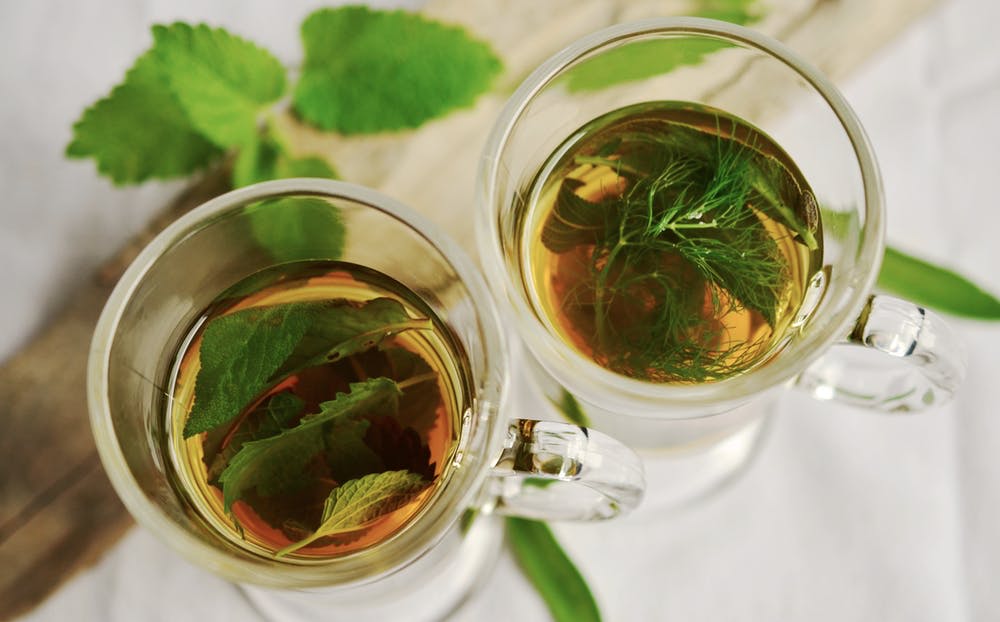
Stressed out? You’re not alone. According to the National Institute of Mental Health, anxiety disorders currently affect 40 million adults in the United States, and are ranked as the top most common mental illness in the country. While said to be “highly treatable” by NIMH, only approximately a third of all anxiety sufferers seek out professional treatment. So what are the alternatives? Some sufferers swear by the effectiveness of certain herbs or other similar options, although WebMD disregards many such treatments as providing “insufficient evidence” to prove their claims. Others, however, bear the description of “possibly effective” on the site. In any case, let’s take a closer look at the most noteworthy herbs used for anxiety today.
Kava Kava
Native to the South Pacific, where it’s been used traditionally in drinks served for their sedative and anesthetic effects, Kava Kava is now available in capsule form or liquid drops (tinctures) in most U.S. health food or even some grocery stores. Known as an analgesic and muscle relaxer, Kava Kava has also been noted as a beneficial treatment for both depression and women experiencing menopausal discomforts. According to a Journal of Clinical Psychopharmacology study, the herb was given to a group which experienced significantly reduced anxiety in comparison to the placebo group.
Valerian
A known sedative, valerian is also commonly used as a sleep aid. While some prefer to use it in tea form over capsules, do remember: the smell of valerian is quite strong, not pleasant, and not easily forgotten, (an open bottle of capsules attracts my cat all the way from another room, for example). For best results, please use it only as directed, in the evening (or time when you can safely relax for a while), and with extreme caution — it should not be taken prior to driving, operating machinery or anything similar.
Lavender
Also effective as both a sleep aid and anxiety reliever, lavender has numerous uses including immunity boosting and hormone balancing. Best forms of use for this fragrant herb include drops of essential oil used either in a diffuser or rubbed into the temples, or steeped in hot water as a tea. Some prefer to use the herb in pillow sachets or eye pillows for its relaxing scent.
St. John’s Wort
Often taken with valerian for insomnia or anxiety, St. John’s Wort has been used medicinally for centuries for the treatment of mental disorders. Also used for depression, the flowering herb has shown its effectiveness as equal to Prozac (but with fewer side effects) and superior to placebo in the studies of physician Klaus Linde. However, once again, caution should be used in taking the herb, especially if you’re already prescribed antidepressants as the combination may cause “life-threatening increases in the neurotransmitter serotonin.” Additionally, complications are possible in the form of skin rashes, headaches, psychosis, confusion, inability to become pregnant, worsening of dementia symptoms, upset stomach, decreased effectiveness of birth control pills, HIV treatments, heart medications, etc. Finally, as in similar effects of Prozac, some individuals with bipolar disorder may experience episodes of mania when taking St. John’s Wort.
Passionflower
Derived from various parts of the actual passionflower, these big, purple beauties pack a powerful sedating effect. Parts of the flower that grow above the ground can be dried for tea, while the rest can be made into capsules and tincture drops. Studies have shown its effectiveness for alleviating anxiety are comparable to prescription medication. Of course, with such sedating effects, caution must also be used when taking it, especially if taken in combination with other sedating herbs like valerian or kava kava. Also, some experts recommend users don’t take it for longer than a month at a time.
Chamomile
Most popular in the form of tea taken at bedtime, these pretty little yellow flowers are known for their calming effects. Since compounds found in chamomile possess the ability to bind with the same brain receptors as medications like Valium, it’s no surprise that some studies have shown a substantial lowering of anxiety symptoms after eight weeks of treatment.
Licorice Root
Popular as a tea as well, licorice root is said to assist the body in moderating stress levels with its naturally occurring alternative hormone to cortisone. Also beneficial in normalizing blood sugar, stimulating the cranial and cerebrospinal fluids, and helping to maintain the overall functioning of the adrenal glands, licorice root is a multi-tasker.
What are Chakras and Why do They Need Balancing?

According to MindBodyGreen, every body has seven chakras, or energy centers, each representing different aspects of our lives, with corresponding connections to emotional issues. Practitioners of chakra healing or other such bodywork claim that areas of blockage in any chakra can cause problems including illness, so treatment may become necessary to regain proper energy flow to the regions. Michelle Fondin, Vedic Educator at The Chopra Center (of Deepak Chopra fame), indicates further that, “The Sanskrit word Chakra literally translates to mean “wheel” or “disk.” In yoga, meditation, and Ayurveda, this term refers to wheels of energy throughout the body. The seven main chakras, which align to the spine, starting from the base of the spine through to the crown of the head. To visualize a chakra in the body, imagine a swirling wheel of energy where matter and consciousness meet. This invisible energy, called Prana, is vital life force, which keeps us vibrant, healthy, and alive.”
How do the Chakras Work?
In short, according to an accompanying video from Yogi Cameron, the seven chakras align the three pillars of your being: body, mind and spirit. Cameron states that when your energy centers are “locked”, your internal energy builds up and throws your body/mind/spirit connection into disharmony. This disharmony can result in sluggishness, a lack of motivation or a feeling of being lost. When they are “unlocked”, or open, the energy flows effortlessly as the body, mind and spirit are in perfect connection. This brings positive energy, feelings of aliveness and a better sense of motivation. Cameron shows the basics on opening each chakra some of his teaching videos as well.
Let’s Check each Chakra:
For starters, there’s the Root chakra, (or Muladhara in Sanskrit), which is located at the base of the spine. It incorporates the bladder, colon, and first three set of vertebrae in the spine. This center represents our security, stability, groundedness or foundation in life, and from it stems issues surrounding our base survival, like having enough food, money or being independent.
Secondly, there’s the Sacral, or Svadhisthana, chakra, which sits near our sexual areas or “sacred space”, above the pubic bone in the lower abdomen slightly in and below the navel. This region specifies our creativity, connectivity to others around us and whether we can accept them or any types of new experiences. The linked emotions deal with pleasure, sexuality, and an overall sense of well-being.
Third is the Solar Plexus or Manipura (which translates to mean “Lustrous Gem”) region, which is centered slightly where the rib cage meets in the upper abdomen or stomach area, and covers from the breastbone to the navel. This energy center dictates our personal power, confidence or the ability to control our destinies, with simultaneous emotional areas of self-esteem or self-worth.
Fourth is the Heart or Ananata chakra which rests in the very center of our chest right above our hearts. As you may have guessed, this center corresponds to love, one’s capacity to love or build connections/attachments to others, and has corresponding emotional issues of love and inner peace.
Fifth comes our Throat or Vishuddha chakra, connected to our ability to communicate, verbally speak, speak our minds or highest truth, and is located in our throat region. It includes the jaw, mouth, tongue, neck, thyroid, and parathyroid glands.
Sixth is the Third Eye, or Brow, or Ajna chakra, which many believe to be linked to imagination, intuition, wisdom, or even psychic abilities. This region is directly between the eyes on the forehead.
Finally we have the Crown or Sahasrara chakra, located at the utmost top of the head. Also referred to as the “thousand petal lotus”, this center links to enlightenment, our spiritual connectiveness to our higher selves and the divine, and has simultaneous emotional issues of our ability to connect to the spiritual realms, experience bliss, and acknowledge both the inner and outer beauty around us.
A Little More Detail
These chakras are then further broken into categories, as noted by The Chopra Center, with each one have a corresponding color as well. The first three chakras, they suggest, are connected and called “The Chakras of Matter” since they are located lower on the body and deal more with the physical, rather than the spiritual, world. The fourth chakra is the very middle of the seven, and unites the lower chakras of matter to the upper chakras of spirit. Then the upper three chakras are called “Chakras of Spirit” as they are located higher on the body and thus represent, and are considered closer to, the spiritual realm.
Ready to get Balanced?
If you think you might need a chakra balancing or healing session, there are numerous places to look. For starters, you can browse this section of The Chopra Center for additional information.
Why You Need Avocado Chocolate Mousse in Your Life

If you’re new to the avocado dessert craze, brace yourself! There’s so much more available than you’ve ever dreamed of, and it’s all due to this deliciously smooth little green fruit (yep, the avocado is technically a fruit. Who knew?) We’ll start off the party with some nutritional facts on the subject, follow up with a few of our favorite tasty avocado chocolate mousse recipes, and then wrap up with some additional variations to fully blow your mind! Ready? Here we go!
With avocados bringing in more than 20 nutrients themselves, paired with monounsaturated fats and the numerous benefits of cocoa powder thrown in to boot, this dessert is a nutrition-packed powerhouse! From Vitamin C to beta-carotene, Vitamin A, protein, potassium, magnesium, manganese, iron, folic acid, niacin, pantothenic acid, and finally the cocoa flavanols and an average serving of only 87 calories, you definitely won’t have to feel guilty indulging in this creamy decadence! Add a few extras like berries, granola, nuts, cacao nibs, or a creamy whipped topping, and you’ve got everyone’s new favorite dessert on your hands.
Here’s a few of our favorite finds, with easy recipe instructions for each delightful version of this heavenly dish:
Four Ingredient Raw Chocolate Mousse
Four simple ingredients and a blender are all you’ll need here. While this recipe serves two, it can be easily doubled for a group of four and so on, and is recommended to include dollops of fresh whipped cream and chilled with berries on top. Vegans can substitute coconut milk whipped cream, however, or step over to the veggie blog of the great Minimalist Baker for her drool-worthy version of Dark Chocolate Peppermint Avocado Mousse (it’s insane, you’ve gotta try it).
Spicy Mexican Chocolate Avocado Mousse
This one tosses in a sprinkle of cayenne to get the blood pumping, and can also be served to the vegan crowd (as long as the proper whipped topping adjustments are made, if included). Keeps in the fridge for around 3 days if necessary.
Primal Mediterranean Gourmet Avocado Chocolate Mousse
A few more ingredients make this version sensational, and also prepared suitably for vegans as well. It can be made up to two full days ahead of time, too, as long as the mousse and whipped cream are stored separately.
Two-Minute Avocado Chocolate Mousse
This version’s ready in just two minutes (give or take a few seconds, depending upon how quickly you can peel and pit an avocado…), and is also divinely vegan. Serve it fresh-made for your friends after dinner!
Chocolate Banana Avocado Mousse
This one incorporates bananas and medjool dates for a full flavor, recommended with fresh coconut shavings on top. Serve this up in pretty glasses!
Cacao and Blueberry Avocado Mousse Parfaits
These are also gorgeous in pretty glasses — the taller and skinnier, the better. Please scan the recipe first for overnight instructions on the coconut cream — it must be done correctly! Substitute any fruit you prefer, as long as it stays firm in the layers until serving time.
Pokeball Avocado Chocolate Mousse Tarts
If you’ve got kids in the house (or coming to it), dazzle them with this healthy gem! It takes a bit of prepping (scan the recipe for steps to the do the night before) and a few extra ingredients, but the smiles (and full healthy bellies) you’ll get are certainly worth the trouble.
Almond Avocado Chocolate Mousse Cake
When you need something with a little heartier consistency than just mousse by itself, but you NEED mousse, go for this one. There are a few steps (including pre-roasting the almonds), but the end result is so satisfying, you won’t be a bit sorry.
Chocolate Pretzel Salty Avocado Mousse Tart
This one will impress your guests any time of year. The instructions say to be certain to chill for at least 30 minutes before serving, but we like our REALLY cold, so we’d very likely double that.
Chocolate Avocado, and Orange Mousse Entremets
So fancy, it’ll knock their socks off. This one isn’t vegan, but can probably be made as such if needed. Alternating the different kinds of mousse with fruit, this one also works out best in your tallest glasses to show off the colorful layers.
Green Evi’s Vegan White Chocolate Mousse
If you’re vegan and want a healthy dessert, but you don’t like avocado (why??), you can try this one out! Using aquafaba (the liquid from canned chickpeas), Green Evi brilliantly constructs this delectable dish. We like ours with extra strawberries.
Which Vegetables are Highest in Protein?
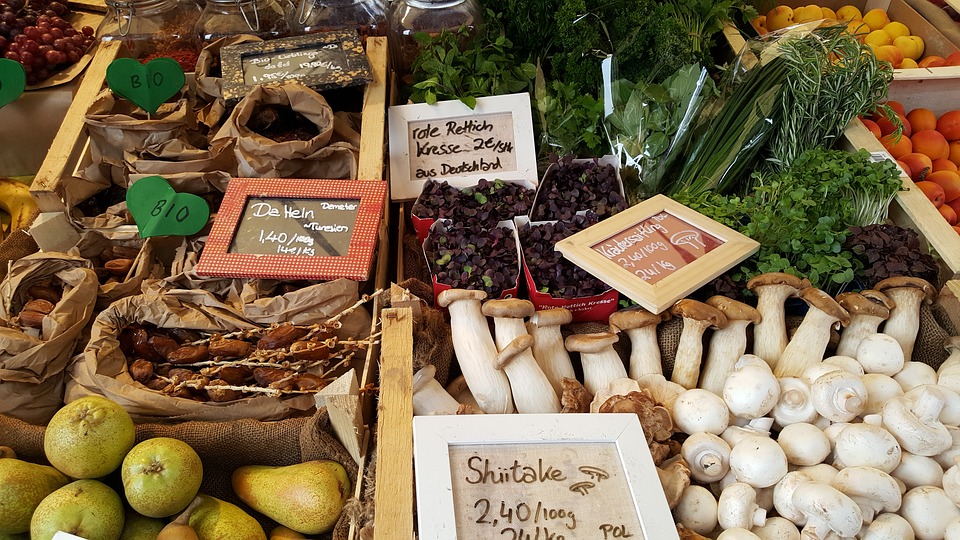
According to the Vegetarian Resource Group, “plant-based proteins are remarkably efficient at synthesizing amino acids and promoting cell growth and repair.” But while it’s easy to get sufficient protein into the diet from protein-rich plant sources like soy, quinoa, hemp seeds (or many other seeds), chia, nuts, chickpeas, jackfruit, oatmeal and brown rice, what can we say about purely vegetable sources? For those who wish to incorporate more of these items into their meals, we’ve searched around and found some of the top vegetable protein sources. For concerned vegetarians or worried new vegans, take heart and gaze on — it’s not hard to get the protein you need from a variety of plant-based sources, even purely from vegetables, if you like.
Packing nearly 8 grams of protein per cup, these are an ideal source of the plant-based nutrient. Check for peas as a substitute for many vegan products, too, including mayonnaise, for an alternative to soy, or try them in various other tasty forms.
Spirulina
Holding its own in the protein department, coming it at 4 grams of protein per tablespoon (that’s tablespoon, not cup), spirulina is a hearty contender for the top protein title. A staple for smoothies, spirulina can also be added to cakes, puddings, salads, yogurts, pastas, cookies and frozen desserts.
Lentils
These tiny lens-shaped legumes hand over approximately 9 grams of protein per half-cup serving. There are several types of lentils, each slightly different in color and flavor, as well as protein consistency — but they average in at around the aforementioned amount. In addition to being low-calorie, high-fiber and nutrient-dense overall, we’ve also heard they can lower cholesterol and maybe even reduce your risk of heart disease. Try some red lentil recipes like soups, dips, hummus, chili and even granola today.
Sun-Dried Tomatoes
Surprised? At 7.6 grams of protein per one cup serving, you’ll want these in your favorite dishes from now on!
Black Beans & Lima Beans
Served in countless dishes from soups to succotash and veggie burgers to brownies, black beans and lima beans are versatile and brimming with protein — both offering between 7 and 8 grams per half-cup serving.
Spinach
Another versatile favorite, spinach offers 5.3 grams of protein per cup, and can be found in everything (often paired with mushrooms — offering 3.9 grams per cup themselves) from salads to omelettes and quiches to pizza and even green smoothies.
Squash
Various forms of squash are available year-round, most of which can be guaranteed to offer around 5 grams of protein per one cup serving. Give some of these summer squash soups or baked spaghetti squash recipes a try this week!
Potatoes
Yep, you heard it right — potatoes! Although they may have gained a reputation as being less than stellar on nutritional value, potatoes offer around 4 grams of protein per medium white potato. Summertime says they need to be made into salad…but you don’t have to stop there! Try them baked, mashed, stuffed, roasted, fried, made into chips or blended into soup today — you can even microwave them at between 5 to 8 minutes each, if you poke a few holes in them first!
Corn
Sweet yellow corn is a summertime favorite, especially for backyard cookouts, and brings with it 4.7 grams of protein per cup. Don’t skimp! It’s high in manganese and other nutrients as well.
Cauliflower, Snap Peas & Asparagus
These each pull in around 2 – 3 grams of protein per cup, and can be found in countless forms of cuisine either raw, roasted, blended into soups or tossed into pasta salads.
BroccoliAt two grams of protein per half-cup cooked serving, broccoli ranks high among the veggie protein powers. Toss some in your salads, soups, casseroles, lasagna, hummus, quiche or all sorts of other recipes today!
Brussel Sprouts These little guys also pop with protein at around 2 grams per half-cup serving. Not only that, they also come with uber high levels of potassium and Vitamin K. Not sure how to prepare them? Try them sauteed with your favorite spices, breaded and fried or baked, made into fritters or chopped and roasted alongside cubed sweet potatoes.
AvocadoCreamy and delicious in dishes from the traditional guacamole or avocado toast to grilled, stuffed avocado halves and even desserts like pudding or frozen dessert pops, this veggie (technically a fruit, but don’t tell anyone) pulls in around two grams of protein per half of an avocado.
Shiitake Mushrooms (Dried)These can give you the day’s protein needs easily. With 1.4 grams of protein per four mushroom serving, and also rich in B-complex vitamins and minerals, you can work them into anything from salads to ravioli.
The Many Amazing Uses of Lavender Oil
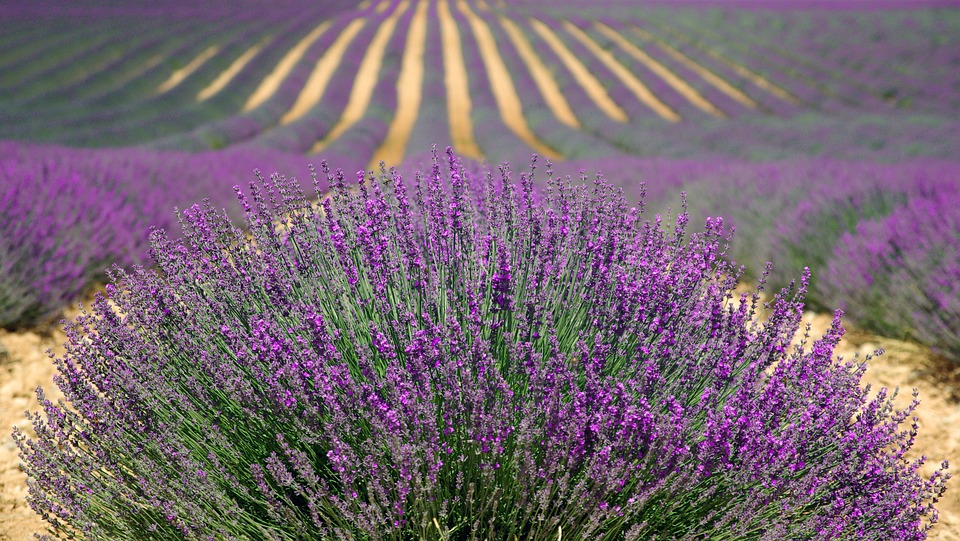
If you’re like me, you’ve mainly used lavender oil for relaxation in the form of aromatherapy — like pillow sachets or a couple of drops on a light bulb diffuser from time to time. But did you realize there are numerous benefits to this oil, including the treatment of skin, circulatory, and respiratory problems? Neither did I before today. Let’s get into some very interesting facts about this fragrant and truly miraculous essential oil. How many ways can we use it?
According to Wellness Mama, lavender is widely loved for its scent — but the love doesn’t stop there. Mountain Rose Herbs mentions it’s been used for hundreds of years as an aphrodisiac, as well as for insomnia, anxiety, and “nervous stomach.” In addition, the British Herbal Pharmacopoeia names it as a prominent treatment for colic, depressive headaches and flatulence. Even more, some practitioners in modern day prescribe it for migraines associated with menopause, and it’s also used in Spain to treat diabetes.
Boasting one of the most recognizable fragrances on earth, lavender also has antimicrobial, antibacterial, stress-alleviating, analgesic, and expectorant uses. It can also be used to calm coughs when diffused into the air, as well as being effective in protecting against airborne viruses. Used in oil or salve form, lavender can help promote sleep and relieve pain or body aches when applied.
Some have had good luck using it as an insect repellent as well. Especially effective at fending off moths and mosquitoes, some folks use it on the skin during their outdoor excursions to prevent bug bites, or right on the bites themselves if you do get them — this oil has anti-inflammatory properties too!
Got a big test? Try a little lavender oil. Mixed with rosemary, it’s been helpful in decreasing anxiety and improving cognitive functioning for others in stressed-out shoes.
Lavender oil has been known to help improve circulation and decrease hypertension when used regularly in vapor form.
Acne has been successfully eliminated or diminished as well, probably due to its antibacterial properties. Some have been known to add a few drops to other lotions and creams as well, in order to increase their potency for treating various skin ailments. A few drops can be placed with cool water into a spray bottle (preferably glass) and spritzed onto sunburned skin to help alleviate pain as well.
Sore backs, muscles, rheumatism, or pain following surgery can benefit from lavender oil also, either used as a massage oil or placed into vaporizers. For headaches, the essential oil can be rubbed into the temples or inhaled via diffuser. If you don’t have a diffuser, Wellness Mama recommends placing some of the dried lavender herb into a pan of simmering water to get some in the air instead.
For breathing problems associated with numerous ailments, lavender oil does the trick. All sorts of issues from colds to the flu, asthma, laryngitis, whooping cough, bronchitis and throat infections can benefit from the oil in vaporizers or applied onto the chest, back and neck areas.
Some have successfully used lavender oil to treat shingles. If you wish to try this, simply apply it directly to the affected area with a disposable cottonball or cloth. The same can be attempted with ringworm as well. (Please note: for any serious cases such as these or other types of irritation, illness, or infection, contagious or otherwise, do consult a doctor prior to treatment with lavender oil.)
Lavender oil can also be used to promote urination, restore hormonal balance and reduce cystitis or any associated cramps from all of these.
If you’ve got kids with lice nits or eggs in their hair, you might be able to treat it with lavender oil by regularly combing it through from scalp to tip. Additionally, lavender oil may stimulate hair growth in those suffering from alopecia when rubbed regularly into the scalp. Male pattern baldness may be prevented or delayed from similar treatment as well.
Please note: Wellness Mama includes a warning about lavender that states she does not use much of it in her household due to the possibility that long term exposure to concentrated lavender may cause hormonal imbalances in men. Also, those with diabetes and pregnant or nursing women should avoid the use of lavender oil altogether. Additionally, some people may be particularly sensitive to it, either in the air or on the skin, while others may be allergic. Use only in small amounts with people who haven’t used lavender oil previously in order to determine how their bodies will react. As with any potent essential oil, please use it cautiously, responsibly, and sparingly, and only after carefully considering the needs of your household.
What are the Symptoms of Parasites?

What are Parasites?
Why People Stress Eat and How to Stop

According to Dr. Susan Albers, psychologist at the Cleveland Clinic Hospital, comfort eating (also referred to as “stress eating” or “emotional eating”) is not uncommon, nor necessarily unhealthy — unless it becomes a very frequent habit. And since stress eating can be tied to our own personal relationship with food, often going back to early childhood, it can be extremely difficult to avoid once started. Let’s consider first some of the biggest reasons we do it.
What’s the science on it?
Although there can be many reasons for our own personal comfort eating, Dr. Albers identifies a few of the main reasons people do it including biology, tuning out, beliefs, convenience, and food as “entertainment.” Our human biology responds to stress by kicking up the body’s cortisol hormone, making us crave things like fatty foods, sugar, and carbohydrates. When these foods are consumed, chemical changes occur in the body which are very soothing. You can see why this could subconsciously become a habit — especially with foods that taste good anyway, like chocolate or cheese-drenched french fries. Once this process becomes a habit, we may gain considerable weight trying to get those soothing chemical change feelings more often.
Tuning out can be very pleasurable
Further, Albers adds, when we tune out while eating, we can feel relaxed because we’re distracted from the painful or stressful experience of the moment. Again, a habit can easily be created from this when we do it too often.
Beliefs, convenience, and entertainment factors
Beliefs that food will make us feel better (remember grandma’s home-baked cookies being offered when we skinned our knees playing outside?), the convenience of fast food and other calorie-rich, unhealthy items (a value meal with a chocolate shake should do the trick on a stressful lunch break, right?), and the entertainment value of eating out or ordering delivery (Domino’s or Pizza Hut?) can also contribute heavily to this problem habit. Consider also the fact that serving sizes have increased substantially over time and fattening sugars, chemicals, etc., are added without us even knowing, and we’ve got a pretty sizable dilemma on our hands. But what can we stress eaters do?
Get mindfully aware, and find some good replacers
Dr. Albers suggests using mindfulness to maintain awareness of our feelings and stressors as they occur, and an assortment of replacers to help us manage them until they pass.
Black tea, sex, breathing exercises and journaling
Black tea, Albers notes, can reduce cortisol levels within one minute, and help us restore ourselves quickly to equilibrium. A foot rub, self-massage, yoga, stretching, and deep breathing exercises can also provide a great deal of relief from various stressors. Some folks recommend replacing the eating behavior with other similarly pleasurable activities to help control the habit. For example, meditation, exercise, baths, listening to our favorite relaxing music, and even sex can activate increased dopamine production and create some of the same types of relaxed, soothing sensations to help manage the stressful feelings in the body instead of eating. Albers also believes writing down how we’re feeling and where we are, what we’re doing, etc., in a journal can help us gain clues to why we stress eat if we don’t know.
Make it more difficult for yourself to grab unhealthy snacks
Others indicate making it more difficult for ourselves to stress eat can also help a bit. Not having certain foods in the house at all (in my friend’s home, for example, potato chips simply may not enter — for me, it’s pizza), storing it out of sight in the lowest refrigerator drawer, or out of reach on the highest kitchen cupboard shelf, or keeping it frozen in the freezer may be helpful. Thinking about positive things, calling a friend on the phone, looking at pretty pictures on tumblr, reading our favorite Thich Nhat Hanh book, or reminding ourselves about the things we are grateful for, etc., can be good temporary replacers as well.
Try it all out when you aren’t stressed first
Dr. Albers points out that we need to practice our replacers when we aren’t experiencing negative emotions or stressors so that we are better able to use them when we are. Says Albers, wisely, “You wouldn’t want to learn how to swim in rough water. Nor do you want to learn the art of soothing yourself without food on a very stressful day.”
Dr. Perlmutter Has Some Cutting Edge Nutritional Advice for You
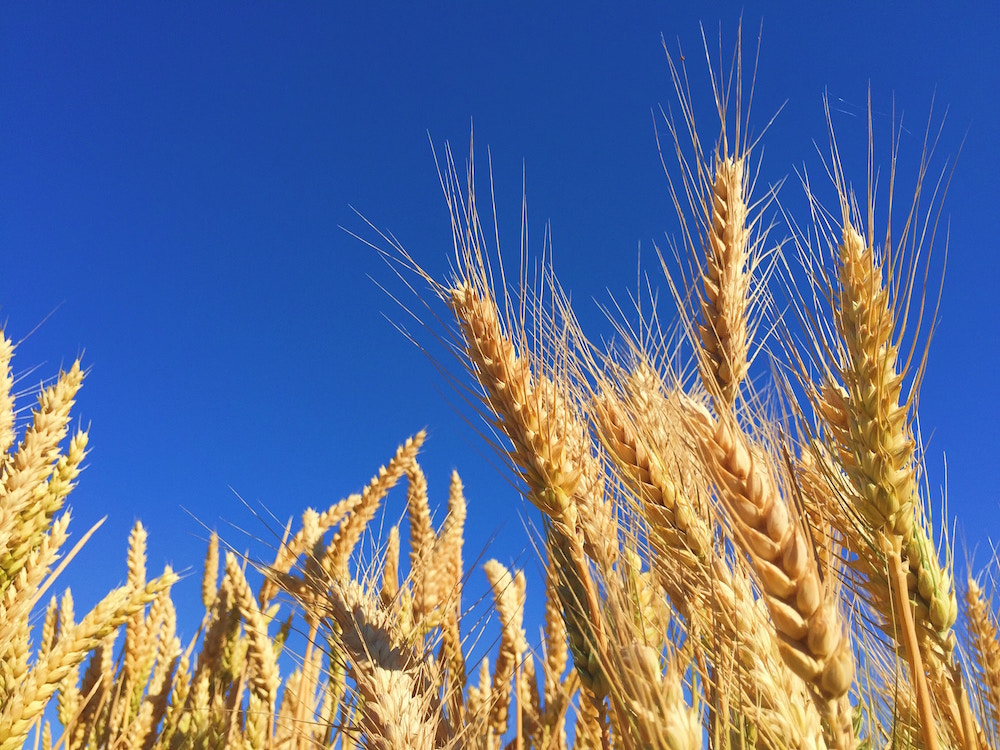
Most famous for his books, international best sellers Grain Brain and Brain Maker, the wildly popular author and neurologist Dr. David Perlmutter presents a unique take on disease prevention and plenty of cutting edge nutritional advice on numerous subjects. Essentially, Perlmutter lectures, writes and discusses his perspectives on various dietary and lifestyle choices which can possibly prevent illnesses such as dementia, ADHD, depression, Alzheimer’s, and other forms of brain disease. The main tenets of his advice center on aerobic exercise and a gluten free diet with lower carbohydrate and higher fat content.
Who is Dr. Perlmutter?
Grain Brain, published in 2013, threw Perlmutter into the spotlight with his controversial claim that “carbs are destroying your brain.” He doesn’t mean just the notoriously unhealthy forms of carbs here either — Perlmutter means all of them, even whole grains, lead to health problems like chronic headaches, dementia, anxiety, even possibly autism and others. He advises that bread and fruit need to take a back seat to certain fats and cholesterols for the sake of brain health, and offers the hope that new brain cells can be grown at any age following the right medical and nutritional guidance.
In 2015’s Brain Maker, Perlmutter draws attention to new research which targets the gut for its role in the health of the brain. Permutter stresses that gut health effects brain health in that the state of the body’s unique microbiome (organisms living in your body, which according to Perlmutter “outnumber your own cells by ten to one”) dictate the state of the brain and potential for brain-related conditions in an extraordinary way.
What Makes Him Worth Listening To?
According to his Facebook page, Dr. David Perlmutter, M.D., FACN, ABIHM is a board-certified neurologist, member of the Board of Directors of the American College of Nutrition, and currently maintains a private practice in Naples, Florida. Having received his MD from the University of Miami School of Medicine, Perlmutter has been featured on CNN, NPR, 20/20, Fox News, Larry King Live, The Today Show, Forbes, Time, The Atlantic, and the Wall Street Journal, among numerous others, and is a leading lecturer at various symposia sponsored by such medical institutions as Harvard University, Scripps Institute, Columbia University and the University of Arizona.
A bearer of many awards including the Leonard G. Rowntree Research Award, the 2002 Linus Pauling Award, and the 2010 Humanitarian of the Year Award from the American College of Nutrition, Perlmutter has not only written best sellers but also extensive medical literature. His research and writing has been featured in The Journal of Neurosurgery, Journal of Applied Nutrition, The Southern Medical Journal and the Archives of Neurology to name a few.
There’s Always A Downside
But not everyone sees Perlmutter’s advice as wise. Some critics claim his guidance on topics like gluten and vaccines are suspect, and follow up by questioning his contributions to the scientific community and medical journals. To add more, they accuse his nutritional advice as running counter to the current approaches stated in most neurological literature, renounce much of his research and unusual medical techniques, as well as questioning his connections to dietary supplement companies. But Perlmutter is undeterred. His response to such criticism included statements such as his 2014 tweet, “Each progressive spirit is opposed by a thousand mediocre minds appointed to guard the past,” considering himself in one book not unlike Galileo who was also initially criticized for his theories.
Further Information
In any case, Perlmutter continues onward, offering additional books for purchase like The Better Brain Book, Raise a Smarter Child by Kindergarten, Power Up Your Brain, The Grain Brain Cookbook, and The Neuroscience of Enlightenment. Perlmutter also offers a blog, video archives of his advice, a website section devoted to his own recommendations on scientific reading, weekly interviews with other practitioners and leaders in health and wellness called The Empowering Neurologist, and an updated list of foods to avoid, increase and recipes to use for optimal health. Finally, Perlmutter provides additional information on condition-specific areas of focus, lifestyle awareness and nutritional guidance pertinent to a variety of illnesses and challenges.
Anyone interested in more information can subscribe to Dr. Perlmutter’s email list or send inquiries (although nothing about personal medical advice can be provided over the message system) here. Upcoming airings of Perlmutter’s Whole Life Plan series are listed by location and date here, with the plan itself explained in this short, informative video.
Ayahuasca Ceremony: The Shaman-led Ceremony From the Amazon


Image: Ammit Jack / Shutterstock
From the most remote regions of the Amazon rainforests, bringing with it remarkable health value as well as a dose of danger, comes the mysterious Ayahuasca ceremony. The Ayahuasca plant has been used traditionally by Amazonian shamans during rituals where it is consumed. The shamans are said to train for years before attempting to lead such ceremonies, learning to get to know the plant through a special diet of several months or longer, with the goal of understanding the language of the plant and its inherent spiritual applications. While current shamanistic adventures with the Ayahuasca ceremony tend to promote healing and positive transformation, past uses have embraced both good and bad intentions (such as manipulations in tricks of war, harming one’s enemies, attempting to gain power over others, etc.) and should be regarded as having such possibilities. Therefore, according to some sources, shamans should be viewed as humans with the potential for both good and bad intentions, not as saints or supernatural beings, in order to keep the proper perspective on the matter.
In some cases, those participating in the rituals will do so as part of a month-long (or longer) jungle “retreat”, said to be beneficial in separating the individual from harmful, negative social and emotional patterns present in their every day life. The retreats combine optimal nutritive changes to the nature-immersive rituals practiced, including the ayahuasca ceremony. The ayahuasca, once consumed, is said to promote a state of “conscious dreaming” which lasts up to two full days, during which participants may not speak or touch one another, so that unhealed emotion surfaces and can be reconciled. The benefits of these dream-like states can be compared to a transformative healing of the subconscious mind, which subsequently brings healing effects to the body, as the body is believed to manifest unconscious symptoms physically. Participants in such sacraments have reported miraculous and instantaneous healing of various illnesses. Others, although a rarity at this point, have had difficulties with ceremonies similar to the ayahuasca ceremony, during which one man reportedly killed another participant in Phoenix, Arizona during a frightful moment of his heightened ayahuasca-induced dream state. Such problems have not been prominent in retreats held in the indigenous regions, however. Ayahuasca has been made popular in the Amazon, while the San Pedro, a blend of rare, native cactus juices, has been derived from regions of the Andes and utilized with similar results. In order to become an ordained shaman, one must endure ayahuasca rituals at least twelve times. A full-length documentary showing the process of eight individuals who participated in the ancient Ayahuasca ceremonies from the day they left their homes for the Amazon and back is available here. These individuals, who suffered from a range of illnesses including Parkinson’s disease, prostate cancer, diabetes, IBS, Crohn’s disease, breast cancer, and more experienced varying results from the ceremonies.
Since the potency and success of the indigenous ceremonies have been shared widely throughout western culture, an assortment of similar experiences (such as the aforementioned event in Phoenix) have subsequently sprung up in varying geographies across the United States and the rest of the world. These new versions, however well-intentioned, must be examined carefully and responsibly before participation on any level. According to some sources, there are certain specific areas of consideration which must be addressed prior to joining in on such events. And although countless links to such ceremonies or similar events can be found in a simple internet search, it is advisable that one know the true reputation and capacities of staff present, as well as the environmental sustainability, respect for shamanic traditions, and other factors relevant to the issue. Being able to trust the people leading the ceremony is paramount and should never be taken lightly.
As we enter a new phase in nutritional health and well-being, there is no doubt a higher value being placed on our Earth’s rare and precious medicinal plants — such as the Ayahuasca. Since many of these natural phenomenons exist only in remote regions being destroyed for other resources at ever-increasing speeds, we must insist upon protective measures to guide our harvesting and potentially overwhelming presence in these fragile ecosystems. We must decrease deforestation and apply a greater emphasis on preservation in all such areas. As we embark on paths we’ve never before wandered, we must listen to the warnings of indigenous cultures along the way, and consult those who know these regions the best. In some cases it seems to be just as the shamans say, “the plants themselves will guide you.”
Have you participated in an ayahuasca ceremony? What was it like?
Foot Reflexology: The Ancient and Mysterious Chinese Tradition
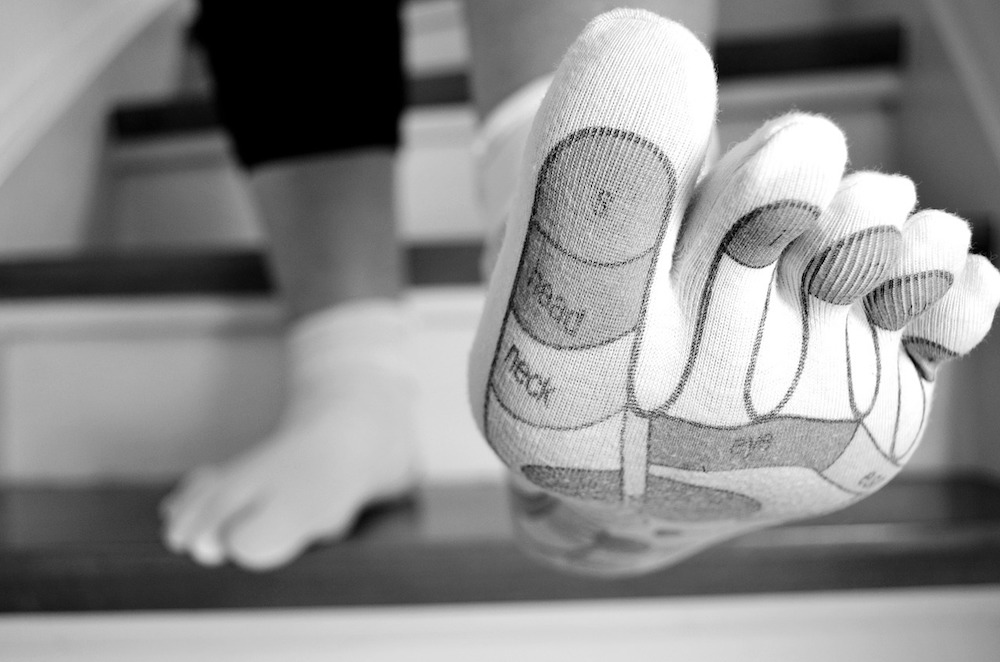

I recall an interesting moment during a regular, standard body massage (back before my son arrived, when I could afford such luxuries), when the masseuse happened to be working on my feet. She interrupted the silence to ask me, “You grind your teeth, don’t you?” I did, in fact, succumb to the habit (in my sleep), but I remember wondering how she knew that. She explained that she could tell by components related to foot reflexology what was happening in other areas of my body. I was floored — and intrigued. This marked the minute I began a journey to better understand the workings of this mysterious foot reflexology, and how I could potentially use it in the future for health benefits or otherwise. Here’s what I found out:
Foot reflexology is a healing art and form of bodywork which is believed to have originated approximately 5,000 years ago, having been noted in ancient Chinese medical textbooks. Reflexology itself is not limited to the feet, but can also be done on the hands — although working on the feet is more popular. Both regions are said to be reflexology “zones” which reflect a system of corresponding relationships between different parts of the human body. The reflexology zones mark vital connections between ten equal vertical zones (formally called “longitudinal” zones). These vertical zones run down the entirety of our bodies from head to toe lengthwise, as marked in the body zone map here. They come together in points on the hands and feet (we’ll talk primarily about the foot zones for our purposes here) , which can be manipulated to improve functioning within meridian zones. From a more scientific perspective, reflexology uses pressure applied to a related area to send “signals” through the nervous system, releasing chemicals like endorphins, which in turn decrease stress or pain to the corrresponding region. KC Miller, founder of the Southwest Institute of Healing Arts, exemplifies this by stating, “The tips of toes reflect the head, heart and chest (and) are around the ball of the foot; liver, pancreas and kidney are in the arch of the foot; and low back and intestines are toward the heel. Practitioners believe that applying pressure to these reflex areas can promote health in the corresponding organs through energy pathways.”
To describe in a bit more detail, each toe, for example, has a corresponding zone which runs through the body from front to back. Later on in history, the concept of horizontal zones (formally referred to as lateral zones) emerged, giving more precision to the foot’s regions and a greater efficacy to working with the relevant pressure points (points of manipulation to trigger the changes in that corresponding part of the body). The horizontal areas across the bottoms of the feet include corresponding zones of the head and neck, chest, abdomen and lower abdomen. If a problem exists somewhere in the body (pain, for instance), applying pressure to or massaging its corresponding pressure point can help alleviate that area’s pain, similar to acupressure. The malfunction of an organ within the zones referenced can also be manipulated by targeting the zone this way.
About 4 – 5 general reflexology techniques are widely recognized, with a visual explanation of each here in this informative video. They are typically done without the use of oil or other lubricants, and are called “thumb-walking”, “finger-walking”, “hook and backup”, and “rotation on a point”, ending with a lesser known “press and slide” technique.
To summarize the reflexologist pictured, thumb-walking uses a gentle thumb pressure to “walk” along the zone in need. Finger-walking is done essentially the same way, useful for both the sides and top of the foot more so than the bottom. Hook and backup uses the thumb to press downward and pull outward. This can be painful so must be used cautiously, and correspond well to the spleen and gall bladder. Rotation on the point uses thumb-walking while rotating the foot along the diaphragm line (see foot map.) The press and slide allows deeper pressure while leaning into it and sliding along continuously. For all of these, it is recommended that the practitioner “check in with” the recipient of the treatment to make sure they are not in too much pain, and act accordingly.
In summary, the healing art of foot reflexology can be replicated at home, but should be considered bodywork which practitioners take time to learn thoroughly before working on others. Since many find it highly effective, it should be treated as such. For additional tips or guidance, those interested may contact the Southwest Institute of Healing Arts here.
Have you tried foot reflexology? Let us know your experience in the comments!
The Coffee Enema: How is it Done? And…Why?
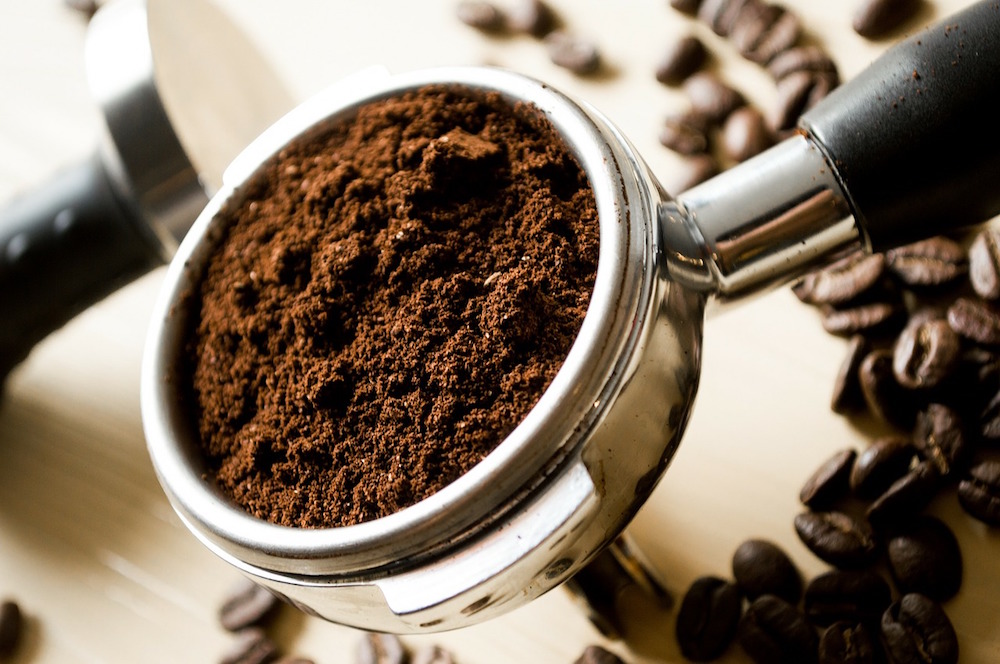
An ancient form of hydrotherapy, enemas have been used for thousands of years to detoxify the colon. Although the technique was previously used in hospitals on a regular basis, it has become less popular in recent years. The coffee enema in particular was originally recommendedas part of a cancer-fighting diet created by Dr. Max Gerson, founder of the Gerson Institute and Gerson Diet Therapy Program. It is Dr. Gerson’s method through which toxic bile is eliminated via the liver at increased rates. This procedure, tested endoscopically was found to almost immediately produce desired results.
Unlike coffee drinking, coffee enemas’ dilation and relaxation process with blood vessels and smooth muscle contributes further to the increase in detoxification. The premise is that poor digestion causes the sugars and proteins from consumed foods to collect in the colon walls and rot, which in turn generates toxicity within the liver. The coffee enema disrupts this collection of toxins, preventing further liver absorption, which may induce further health ailments if left unchecked. The process overall alleviates a sluggish liver, contributes to the alkalinizing of the small intestine, thus aiding digestion, as well as having astringent effects on the large intestine which helps scour the colon. Scientifically speaking, coffee contains choleretics which are key to implementing the detoxification process from the gallbladder. This is present in modern medical literature as safe to use several times per day without negative side effects. Dr. Gerson noted that coffee enemas also stimulate increased enzyme activity which decreases free radicals in the body, subsequently diminishing their activity in the development of illnesses such as heart disease, cancer and the overall aging process. This enzyme activity, called the glutathione-S-transferase enzyme system, is measured at 600% above normal after a coffee enema has been utilized.
The best time to do a coffee enema is following a regular bowel movement. If this is not possible, try doing a plain water enema first to properly cleanse the colon. The individual may feel a slight rush from the caffeine, so this should not be done just prior to bedtime as sleep may be disrupted. Dr. Gerson recommends one enema daily for the average user, with increased daily enemas up to several for very sick persons (such as up to six daily for those fighting cancer). These can be done over the course of several months for optimal results.
The process involves the preparation of (preferably organic) coffee with purified water ahead of time, which is then cooled in the refrigerator overnight. An alternate method involves stove preparation, after which the pan of coffee is allowed to cool over time, adding a few ice cubes to speed up the process. Once properly cooled, the coffee is placed through a strainer with additional purified water into a clean 2 quart enema bag. It’s important to then carefully remove any air from the bag and sufficiently lubricate the tip prior to rectal insertion.
The rest of the process should be done cautiously and gently, retaining as much comfort for the user as possible. The liquid, after fully inserted, should be kept inside the colon for about 15 minutes, although some users may not be able to do the full amount of time. The liquid can be eliminated on the toilet after an adequate amount of time has been completed. If you notice some liquid is retained inside the colon, this is likely
For those with gas problems, try exercising a little bit first. This may help you to relieve the gas prior to attempting the enema. Also, try to fill your entire colon with the liquid if possible. It may help to massage the abdomen if this doesn’t seem to be happening, or try changing your position from right side, to lying on your back, to left side (at five minutes in each position). If the enema makes you feel too much of a rush or too jittery, you can reduce the amount of coffee to water proportionally. If you feel particularly light-headed, it may be because the enema can lower your blood sugar. Try eating a light snack prior to or just after attempting the enema. Make sure the liquid is not too cold or hot and try placing a pillow or towel roll under your bottom to promote the liquid flow upward. Blackstrap molasses is known to have a positive effect for those who have trouble too, but only a tablespoon or two should be added to the liquid.
Plant Based Diet: The Health and Environmental Benefits
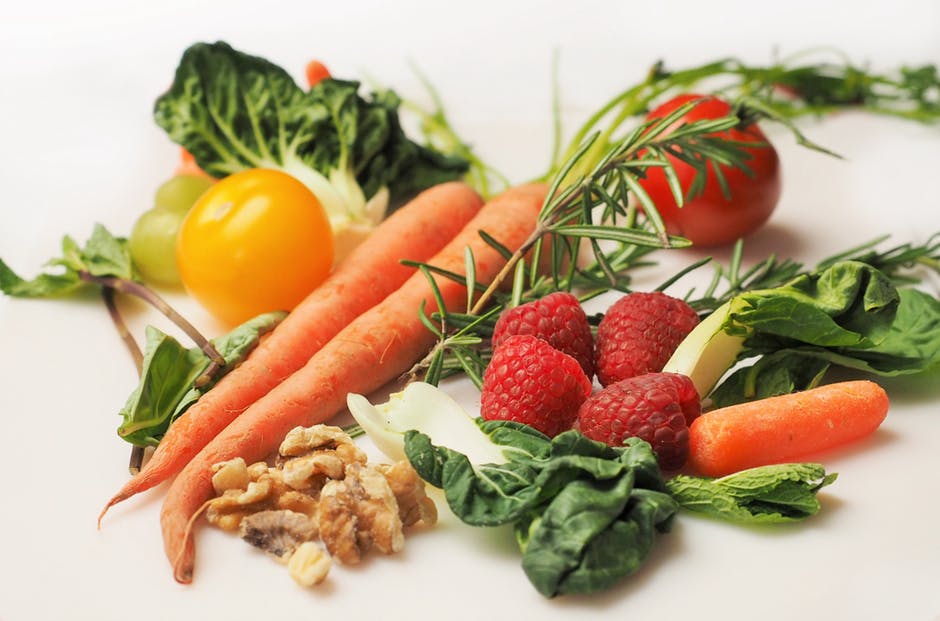
The perks of adopting a plant based diet might just be too numerous to mention. From the many assorted health benefits it brings to the ceasing of an environmentally destructive lifestyle to the diminishing of cruelty to animals worldwide, it seems there’s no real negatives to the diet change. Although it may seem challenging, there is help along the way from free vegan recipe blogs to follow, to social media support groups for transitioning from meat-eater or vegetarian diets to plant based to nutritional guides abound. Let’s take a look at how people are doing it and why.
If you’re ready to make the change, but aren’t sure quite how, you aren’t alone. Many social media groups have sprung up around transitioning in order to share ideas, discuss remedies to the challenges, and swap recipes. An easy search on Facebook should show countless options as results, not to mention regular Google search articles and how-to guides. Keep in mind that some view “plant based” as simply the dietary aspect of veganism while a full lifestyle change, incorporating the rejection of wearing leather, refusal to ride horses, etc., embraces the whole gamut. There’s a lot to consider, so just do the best you can and break it into pieces as you go for greatest clarification. You’ll get where you want to be in no time!
Benefits of a plant based diet
Plant-based diets can promise a wide array of benefits including lower rates of heart disease, which is the leading killer of both men and women in the United States with 1 million people dying from it annually. The Vegetarian Times has named a low-fat vegetarian or plant-based diet to be the “single most effective way to stop the progression of coronary artery disease or prevent it entirely.” According to Dr. Joel Fuhrman, vegetarians/vegans have lower rates of CVD than meat-eaters due to consuming less cholesterol and animal fat, more fiber, and generally more antioxidant-rich produce. Additionally, plant based diets can promise lower blood pressure, as confirmed in the journal JAMA Internal Medicine. Throughout the 7 clinical studies (and another 32 published studies published over a century), plant based diets were proven to actually be effective in lowering high blood pressure. Mood improvements, greater longevity, fewer weight problems, a lower risk of and help with the prevention of diabetes, healthier bones, reduced risk of food-borne illnesses, higher energy, the reduction of pollution, decrease of deforestation, lessening of famine and decreased animal cruelty.
But what can I eat on a plant based diet?
Don’t worry – you won’t run out of foods you can eat! The easiest way for most people to transition to fully plant based from meat-eating is to go vegetarian first. Since many foods contain dairy and eggs but not meat, this is a simple first step. Then, start learning about the vegan versions of things. Most big cities (and some smaller ones!) have vegan bakeries, or at least offer baked goods in their grocery stores. Dairy-free cheeses can be purchased at many stores or made at home. You’ll notice numerous protein replacements for a lot of dishes, including even foods you can grill at a cookout. You’ll find out about seitan, tempeh, chickpeas, jackfruit, hemp seeds, assorted nut milks and butters (as well as the nuts themselves), peas, soy, quinoa, spirulina, lentils, adzuki, mung and other types of beans, brown rice, eggplant, granola, spaghetti squash, and oatmeal.
Be particularly mindful of your protein, iron, vitamin B12 and vitamin D intake, since the plant based diet requires consciously ensuring they’re in your life. The Harvard Health Blog lists the RDA for protein (for the average adult) at 0.8 per kilogram of body weight. If you’d like to personalize that, check the handy online nutrient calculator from the USDA here. Also, it helps to know that there are no advantages to the over-consumption of protein either, as it can actually lead to health problems just like insufficient protein intake can.
To get enough iron, plant based diets should include bran flakes, dried figs, prune juice, dried apricots and raisins, cooked spinach, cooked mushrooms, seeds, nuts and/or blackstrap molasses. Be sure to eat certain foods in combination to avoid the depletion of some foods’ iron by ingesting others (this occurs due to phytate found in certain legumes, grains, etc) So try to eat things like broccoli with tofu together, beans in tomato sauce, etc. Also make a point to eat foods rich in iron that can also help with vitamin C absorption, like swiss chard, bok choy and potatoes.
As far as vitamin D, there are different kinds. Additionally, there are very few foods with vitamin D which are naturally occurring, such as egg yolks and fatty fish. In fact, most forms of vitamin D in dairy and similar products occur because it was fortified — which soy and nut milks often are too. Humans can also spend time in the sun to get their vitamin D (try to get some directly on the skin for a few minutes every day if possible – but not too much and don’t get a sunburn!) There are also ways to increase the vitamin D in mushrooms by placing them in the sun. These and other ideas and suggestions, including what to do if you’re a breastfeeding vegan, can be found here. All information you should about vitamin B12 can also be found here and keep in mind the benefits and many uses of nutritional yeast, usually fortified with B-12 and rich in several other nutrients.
Overall, the transition is worth your while and you won’t find any problem getting enough to eat in the right amounts with all the proper nutrition. All it takes is a bit of thought and some creativity! Give the plant based diet a try today — you won’t regret it!
